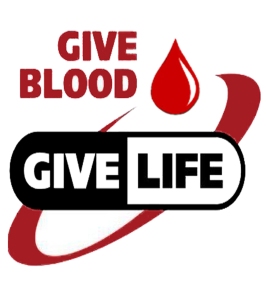Perhaps you’re upset that you missed the opportunity to sleep on a New York City sidewalk during a chilly November night just to have a brief audience (I’m talking about five seconds) with Stephen King to get a book signed. If you are, and you want to know what King’s Tuesday (November 11) appearance at the Union Square Barnes & Noble was like, this is for you.
Stephen announced his six-city Revival book tour a few months ago, with New York being the first stop. I live in New Jersey, less than an hour away, and arrived at Union Square at 8 p.m. Monday with my sleeping bag. (My wife was not at all pleased that I willingly opted to sleep on a sidewalk that likely has been peed or puked on at some point, and that I might sit next to someone who would say “Hi, I’m the Liberian Minister of Handshakes and I flew into New York and bypassed security—which was remarkably easy—just for this event! Pleased to meet you!” I justified it this way: I’d get a night away from my 3-year-old toddler and might actually get to sleep soundly for a change; and I’d be surrounded by like-minded King fans and we’d all look out for each other. And that’s exactly what happened. Meeting fellow travelers always adds to the experience.)

It might not seem long–well, it wasn’t at the time of me taking this photograph–but this line in front of the Barnes & Noble in Union Square to see Stephen King would literally wrap around an entire city block. I’m glad I got there when I did and would like to thank the hobo who kept me warm in my sleeping bag. His rates were very reasonable.
The store opened at 9 a.m. and I entered, purchased a copy of Revival, got a wristband that guaranteed I’d get an autograph, and then was herded upstairs to sit with my newly made friends in rows of folding chairs before an empty elevated stage with the Barnes & Noble logo emblazoned in the background.
The time was near! Some attendees had other books they wanted signed. Others, like me, hoped to snap a selfie while King signed. Our hopes were quickly dashed by event organizers. We were told in no uncertain terms:
1. Only Revival will be signed. No other books. Don’t even try. Representatives from the publisher will be present and armed with rattan canes to make sure you comply.
2. Mr. King will not personalize anything. No names. No “Happy Birthday” or “Best Wishes” or “Give me a Lock of Your Hair or I set off the Bomb under My Coat.” No dates. Mr. King will sign his name, and that’s it.
3. Mr. King will not pose for photos, although you may take them from where you’re seated or from where you are on line. No flash photography. You will be asked to pocket your phone when you get on stage. Don’t make us ask you to put things away. We deliberately didn’t feed our pit bulls. No selfies.
Now, I don’t have a problem with the whole no-posing-for-photographs rule. Essentially the author will sit, sign the book, stand up and pose for the photo, sit back down, sign the book, stand up and pose for the photo, sit back down—that indeed takes time, and it’s a bit unfair to ask a 67-year-old man who was hit and seriously injured by a car to do this more than 350 times. And the flash photography rule’s fine too. But, honestly, the author need not do anything for a selfie—it’s all on the fan, whose job is to stoop, line up the shot, hope the author is looking, and then snap it. Yes, it would take time, but not nearly as much as taking a traditional photo. But this wasn’t allowed. So be it.
It would’ve been nice, however, if we had been allowed to get a book other than Revival signed. My favorite King book is ’Salem’s Lot and there were plenty stocked on the store’s shelves. I’d have gladly purchased one, along with Revival, with the signature going on ’Salem’s Lot. The store (and author) would’ve made more money, and the fan would’ve gotten the signature on the preferred book. But this was verboten. The rules were hard and fast and enforced so the event would run fast. And boy did it.
Stephen promptly appeared at noon on the store’s 4th floor to a rousing ovation from the more than 350 people who braved the cold to be there. Stephen graced the stage, thanked us for being there, cracked a joke about how he could go home now, and said, “Let’s do a signing.”
And just like that, we took whatever photos we could, got on line, took the stage, had our books placed before Stephen, and were able to interact for a few seconds.
I didn’t pre-plan a question. My comment would be one of at least 350 Stephen would hear that day and probably promptly forget. No biggie. We greeted each other, and I said that I know he’s probably heard this before, but please write a sequel to ’Salem’s Lot. He looked at me somewhat quizzically, cracked a sly grin and said he’d think about it. I thanked him, he said you’re welcome and that was it. Off the stage and out of the bookstore, the I Love Lucy chocolate conveyor kept moving.

Sorry about my big ugly mug taking up 90 percent of this photo, but this was the best selfie I could snap at the King signing. Cameras were forbidden on stage, and I’m pretty sure security would have broken my kneecaps had I attempted one.
Was it worth it? To meet a writing legend who rarely does book signings? Yes. It was. Stephen King was who I expected him to be: pleasant and professional. Revival now sits on my bookshelf next to signed Michael Crichton, Dean Koontz, and Dave Barry books, among others. Clearly it’s the highlight, one that will be passed down to my son and not sold on eBay—at least it had better not! Harold Bloom’s crankiness aside, King will go down with Shelley, Lovecraft, Wells and Stoker. All of us have read a King book at some point in our lives. And his works will endure long after he decides to throw the sink through the window and bound off into the darkness like the Chief from Cuckoo’s Nest.

Had Stephen allowed personalizations, I would’ve suggested “Ebay Auction Winner,” just to see his reaction. But the rules stated no names, and if I were to sell this book on eBay, Stephen made the job easier by NOT personalizing anything. But this book won’t be sold, auctioned or anything of the sort. It’s a special book that sits next to my signed copies of Dave Barry’s Money Secrets, Dean Koontz’s Innocence, and Michael Crichton’s Jurassic World.
I’m not one for transitions, so here we go: My first-ever bookstore event will be held on November 22 at 6 p.m. at the Barnes & Noble in Bridgewater, New Jersey. It’s a book launch. Plenty of family and friends, and yes, you’re invited. Here are my rules:
1. If you want to take a photograph with me (although I don’t know why you would want to), I’m fine with it. Just ask.
2. I will be happy to personalize and thereby devalue the book, making it harder to sell for 2 cents on eBay.
3. I don’t have a backlist. The Dark Servant is my first book. But if I ever get to the point where I have a bunch of different titles floating around, and you want to get one signed, in addition to buying whatever one just went on sale, by all means, bring/buy it. Hopefully there will be a next time, and a time after that. I figure, it’s the least I can do if you took the time to sleep in front of the store just to meet me.
Oh, that’s the other bit of good news: you won’t need to sleep in front of the B&N the night before my event. But if you want to, well, I’d be honored. Hot cocoa on me.




